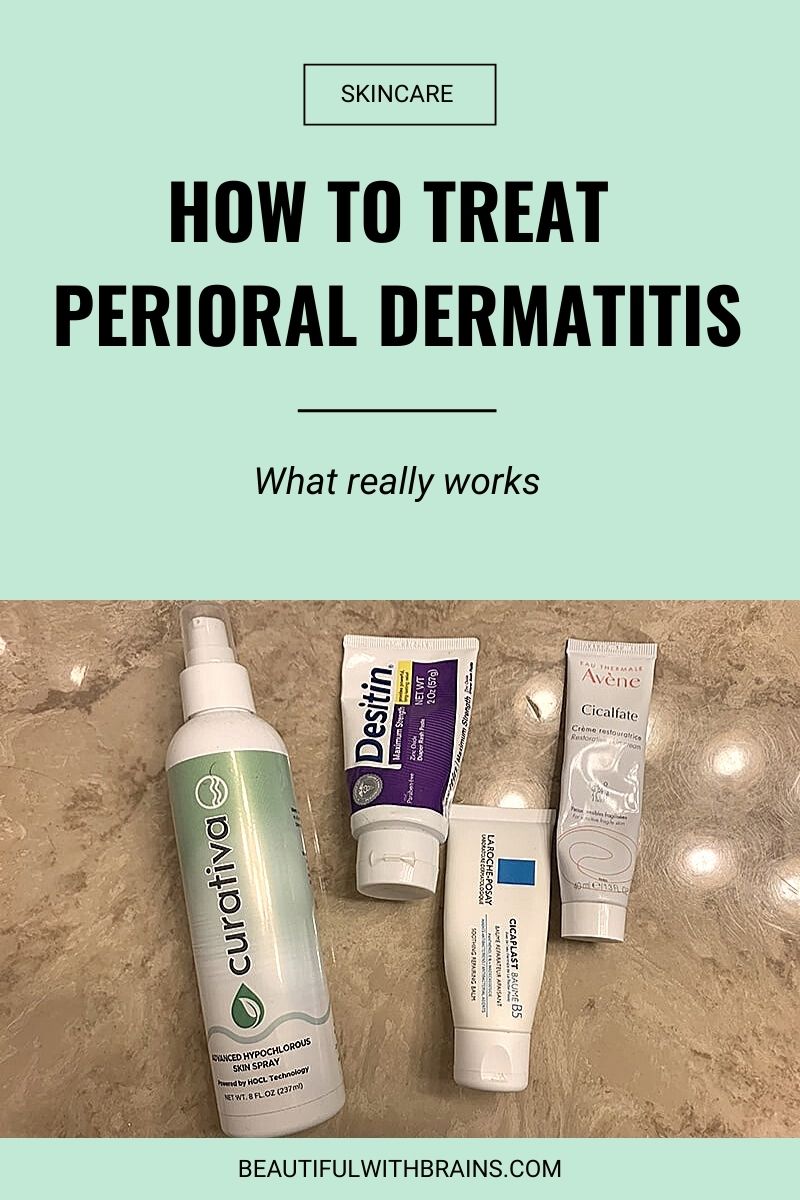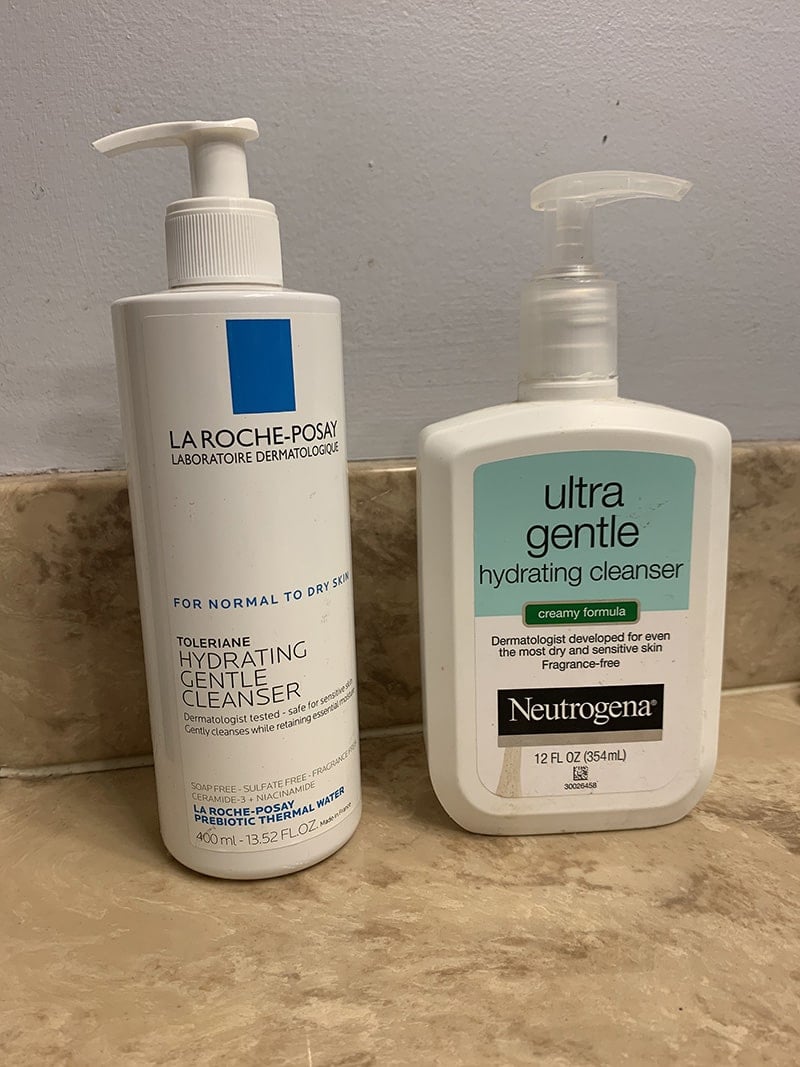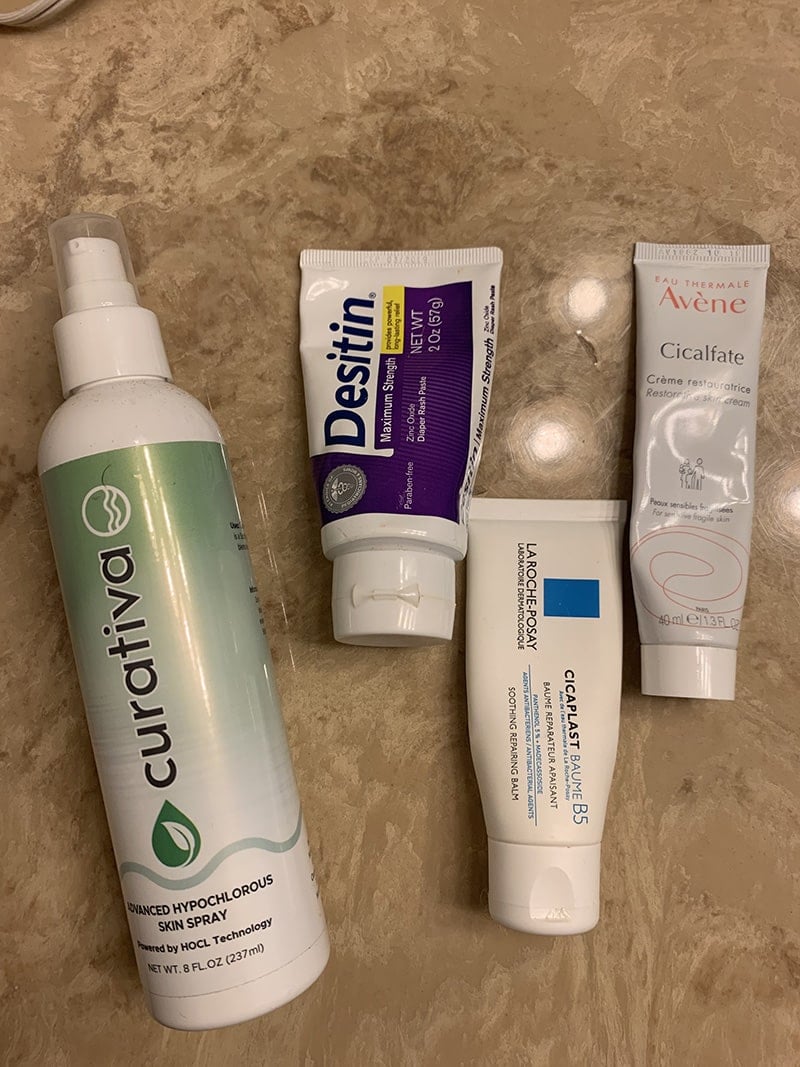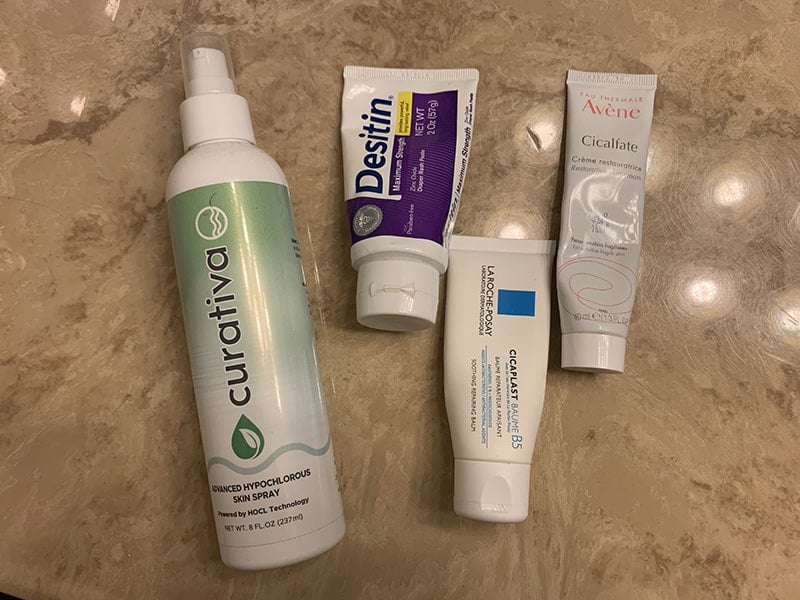
One morning you wake up to clusters of tiny red bumps around your mouth and nose and think oh, it must be a new product breaking you out or maybe it’s because you’ve been slacking on your tretinoin at night. So, naturally, you treat it like you would any other breakout and think it will go away.
Except it doesn’t.
That’s what happened to me for 2 years. Yes, for 2 years, the tiny little bumps around my mouth, I chalked it up to acne. But nothing helped it! In fact, my acne products seemed to be making it worse.
Every time I looked in the mirror I would have new bumps pop up somewhere on my face. It wasn’t until I brought it up with my dermatologist, that I realized I wasn’t dealing with acne at all and I actually had what is called perioral dermatitis.
What Is Perioral Dermatitis?
Perioral dermatitis or POD is an inflammatory skin condition that typically presents as a red, bumpy rash near the mouth, nose and eyes. It can also cause flaky skin and itching. POD can have different presentations depending on how severe your case is. It is not contagious, but can sometimes spread to other areas of your face, like your forehead.
Perioral dermatitis is oftentimes misdiagnosed as acne, or other inflammatory skin conditions like rosacea or allergic/contact dermatitis. This skin condition most commonly affects women, usually young adults to middle-aged.
Related: Adult Acne: Why It Happens And How To Treat It
Your skincare products are wreaking havoc on your skin? Download your FREE “Skincare Ingredients To Avoid” cheat sheet to find out what the most common culprits are and cut them out of your routine:
Symptoms Of Perioral Dermatitis
- A red, bumpy rash usually located around the mouth or nose
- Itching or burning on the skin where the rash is
- Pustule like acne lesions that can appear in clusters
For me, I never developed a rash and my skin was never itchy. I simply had tiny red bumps that popped up around my mouth and nose. Many of them were little pustules and looked exactly like acne.
What Causes Perioral Dermatitis?
Unfortunately, the root cause of perioral dermatitis is unclear, but there are a few things that have been associated with POD.
- Topical and corticosteroids (including nasal sprays)
- Fluorinated toothpaste
- Certain microorganisms (like bacteria or yeast)
- Hormones
- Certain skincare or makeup products

Perioral Dermatitis Treatments
There are many different types of treatments for perioral dermatitis, including prescriptions and home remedies. In many cases, perioral dermatitis treatment also requires lifestyle changes to avoid any triggers and future outbreaks.
Perioral dermatitis can come back after treatment, so it’s important to figure out anything that might be triggering it for you. It’s important to note perioral dermatitis will take several months of treatment to fully resolve, even with prescription options.
Prescription Perioral Dermatitis Treatments
Typically, if you see a doctor for perioral dermatitis, they will prescribe oral antibiotics, topical treatments, or both.
1. Oral Antibiotics
A 2-3 month long course of oral antibiotics, like tetracycline, doxycycline or erythromycin is commonly used to treat perioral dermatitis. For more severe cases, you may be prescribed oral and topical antibiotics.
2. Topical Treatments
Topical antibiotic creams such as metronidazole, erythromycin or clindamycin, are most often used in perioral dermatitis treatment. Other topical ingredients that can be used include azelaic acid, sulfur, zinc pyrithione, sulfacetamide and adapalene. Immunosuppressive agents such as tacrolimus and pimecrolimus have also been shown to be effective in treating POD.
Related: The Complete Guide To Azelaic Acid: What It Is, What It Does, And How To Use It

OTC Perioral Dermatitis Treatments
Perioral dermatitis can sometimes be managed at home with OTC treatments, along with changes to your skincare routine. Luckily, some of the commonly prescribed ingredients are also available over the counter. Adapalene, zinc, sulfur and azelaic acid are all available OTC and are worth trying out to help with POD symptoms.
Related: Is Sulfur The Best Acne Treatment?
Lifestyle & Skincare Changes
More often than not, you will have to make some major changes to get rid of perioral dermatitis and prevent any recurrences. I had to completely change my skincare routine and switch to very gentle products.
Here are some things that can be helpful when dealing with perioral dermatitis:
- Sulfate-free and fluoride-free toothpaste
- Washing sheets, pillowcases, towels, etc regularly
- Using a hypoallergenic laundry detergent
- Gentle skincare products (sulfate and fragrance-free)
- Avoiding any topical or inhaled steroids (cortisone cream, nasal allergy spray etc)
- Avoiding heavy creams or moisturizers
- Using sulfate-free hair products
- Only using very gentle exfoliants (physical & chemical)
- Avoiding irritating products
Related: The Truth About Hypoallergenic: What Does It Really Mean?

What Worked For Me
Since my dermatologist diagnosed me with perioral dermatitis, my first treatment was a 2 month course of doxycycline, along with my prescription Curology formula with tretinoin, clindamycin and azelaic acid. She told me that my formula could help treat the POD so I continued to use it.
I started seeing great improvement in a couple weeks with the oral antibiotics. When the 2 months were up my skin was completely clear and had been for weeks. Unfortunately, the POD started to come back a few weeks after finishing up the antibiotics.
I started noticing that the night’s I used my Curology formula, the next day I would have more spots pop up. I didn’t want to go on another round of antibiotics, so I started to look into other options.
Related: Does Curology Work? The Truth About Customised Skincare
Back To The Basics
I had read that many people had good success with clearing their perioral dermatitis when they stopped using any sort of skincare products for a few weeks. Like not even using a cleanser.
Personally, I chose to only use a very basic and gentle cleanser and moisturizer. And that’s all I used for a few weeks.
La Roche Posay Toleraine Hydrating Cleanser & Neutrogena Ultra Gentle Creamy are my go-to cleansers. For moisturizers, I used La Roche Posay Cicaplast Baume B5 or Avene Cicalfate Restorative Skin Cream.
Soothing Products
After a few weeks of only using cleanser and moisturizer, I saw a lot of improvement. But I was still having an occasional flare up. I did some research and found that zinc and hypochlorous acid can be great for soothing skin and treating perioral dermatitis.
So, I started using a spray that contained hypochlorous acid (available on amazon). I sprayed that on my skin 2x a day after cleansing. Then followed with diaper rash cream. Yes, really. Diaper rash cream is great because it has lots of zinc oxide, which is great for inflammation and soothing skin.
I think the diaper rash cream has been the biggest game-changer for me. I noticed a huge difference overnight. It helps reduce any redness, calm down irritation and bumps.
The Bottom Line
These things, along with the above lifestyle changes, my POD has not come back! I am still not using any exfoliation or my Curology formula for the time being. I am going to give my skin a long break from any sort of exfoliation.
Not only is my perioral dermatitis gone, but my skin looks and feels so much better. I think the very simple routine has helped my skin tremendously.

